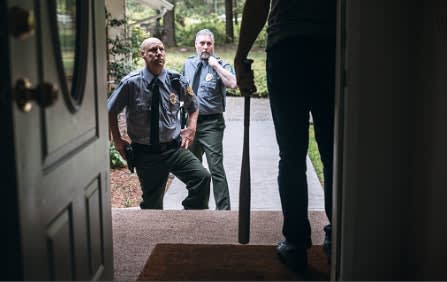Don't park your patrol vehicle directly in front of the residence. Park some distance away and approach on foot. An attack with a firearm on an officer responding to a domestic call is most likely to occur when making the approach to the residence, with the attacker lying in wait for an ambush. Be stealthy in your approach, taking time to take in what you can about the scene. And please, don't stand directly in front of the door when you knock. This seems obvious, but complacency sometimes sets in and simple mistakes are made. I've seen it happen.
4. Observation
Once inside the home, be sure to very carefully survey the scene. Read the room. Ask yourself, "Who is here at the scene? Who among the people present appears to pose a threat? Are there firearms or edged weapons visible? Where are the places where such weapons might be secreted away? What can be used as an improvised weapon? Would it be safer if we took this discussion outside?"
5. Impairment
While I was unable to find in my research for this column any empirical data on the percentage of DV calls involving persons who are either drunk or high on an illegal substance, experiential knowledge tells me it's a factor in a fairly significant proportion of such incidents. Drunken people—and those under the influence of illegal narcotics—have a tendency to do stupid and wildly unpredictable things.













